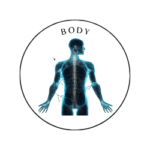 Mind
Mind
- Digital and Modern Well-being
- Mental Health and Emotional Well-being
- Mind-Body Connection and Holistic Health
- Parenting and Family
- Personal Growth and Development
- Relationships and Social Well-being
- Stress and Relaxation
- Therapeutic and Creative Practices
- Trauma and Recovery
- Work, Productivity, and Discipline
 Body
Body
 Fitness
Fitness
 Food
Food
 Beauty
Beauty
Fertility Awareness

Fertility Awareness: Understanding Your Body for Conception
Fertility awareness is an empowering approach to understanding your body’s natural rhythms and cycles, helping you make informed decisions about conception and reproductive health. By tracking physical signs and symptoms, you can identify your fertile days, optimize your chances of conception, and better understand your menstrual cycle. This guide delves into the principles of fertility awareness, key concepts, methods, and tips for those trying to conceive.
What is Fertility Awareness?
Fertility awareness refers to the practice of monitoring and interpreting the various physical signs of fertility during your menstrual cycle. This method enables individuals to recognize the days when they are most likely to conceive, enhancing their chances of achieving pregnancy. Additionally, it promotes a deeper understanding of your reproductive health and can help identify any potential issues with your menstrual cycle.
The Menstrual Cycle: An Overview
Understanding the menstrual cycle is essential for effective fertility awareness. The menstrual cycle typically lasts between 21 to 35 days and can be divided into four main phases:
Menstrual Phase: The cycle begins with menstruation, where the uterine lining sheds if there is no pregnancy. This phase lasts about 3 to 7 days.
Follicular Phase: Following menstruation, the follicular phase begins, where the body produces hormones (follicle-stimulating hormone, or FSH) that stimulate the ovaries to develop follicles. One follicle will mature into an egg (ovum). This phase lasts about 7 to 14 days.
Ovulation: Ovulation occurs when the mature follicle releases an egg, typically around day 14 of a 28-day cycle. This is the most fertile period, and the egg is viable for 12 to 24 hours after release.
Luteal Phase: After ovulation, the luteal phase begins. The ruptured follicle transforms into the corpus luteum, which produces progesterone to prepare the uterine lining for potential implantation. This phase lasts about 10 to 16 days.
Key Indicators of Fertility
To effectively utilize fertility awareness, it is essential to recognize and track the following key indicators of fertility:
1. Basal Body Temperature (BBT)
- What It Is: Basal body temperature is your body’s temperature at rest, typically measured first thing in the morning.
- How It Works: After ovulation, a woman’s BBT typically rises by about 0.5°F to 1°F (0.3°C to 0.6°C) due to increased progesterone. By charting your BBT over time, you can identify the temperature shift that occurs after ovulation, indicating your fertile window.
2. Cervical Mucus
- What It Is: The consistency and appearance of cervical mucus change throughout the menstrual cycle.
- How It Works: During the fertile phase, cervical mucus becomes clear, stretchy, and slippery, resembling raw egg whites. This indicates increased estrogen levels and facilitates sperm movement. Tracking these changes can help you identify your most fertile days.
3. Menstrual Cycle Tracking
- What It Is: Keeping a record of your menstrual cycles, including start and end dates, flow intensity, and symptoms.
- How It Works: By understanding your cycle length and regularity, you can predict ovulation and identify patterns that indicate fertility.
4. Other Physical Signs
- Ovulation Pain: Some women experience a dull ache or twinge on one side of the abdomen during ovulation, known as mittelschmerz.
- Breast Tenderness: Hormonal changes may cause breast tenderness around ovulation.
Methods of Fertility Awareness
There are several methods for practicing fertility awareness, each with varying levels of complexity. The most common methods include:
1. Calendar Method
This method involves tracking your menstrual cycle on a calendar to estimate your fertile days. You can determine the average length of your cycle and identify your ovulation window based on previous cycles.
2. Basal Body Temperature (BBT) Charting
By measuring and charting your BBT daily, you can identify the temperature rise that indicates ovulation has occurred. This method works best when combined with other indicators, such as cervical mucus.
3. Cervical Mucus Monitoring
Regularly observing and documenting the consistency and appearance of your cervical mucus can help pinpoint fertile days. This method can be used alongside BBT charting for more accurate results.
4. Fertility Awareness Apps
Several mobile applications are available that can help track menstrual cycles, BBT, and cervical mucus changes. These apps often include reminders and educational resources to enhance your understanding of fertility.
Tips for Effective Fertility Awareness
Consistency: Track your signs consistently over several cycles to identify patterns and improve accuracy in predicting ovulation.
Educate Yourself: Familiarize yourself with the various fertility indicators and how to interpret them.
Be Patient: It may take several months of tracking to fully understand your body’s patterns and achieve optimal timing for conception.
Consult a Healthcare Professional: If you have irregular cycles or experience difficulties conceiving, seek guidance from a healthcare provider who specializes in reproductive health.
Create a Comfortable Environment: Measuring your BBT requires a consistent routine, so find a method that fits well into your daily life.
Conclusion
Fertility awareness is a valuable tool for individuals and couples seeking to understand their reproductive health and optimize their chances of conception. By tracking key indicators such as basal body temperature, cervical mucus, and menstrual cycle patterns, you can gain insight into your body’s natural rhythms and identify your most fertile days. Whether you are trying to conceive or simply wish to understand your body better, fertility awareness empowers you to make informed choices and take charge of your reproductive health.
